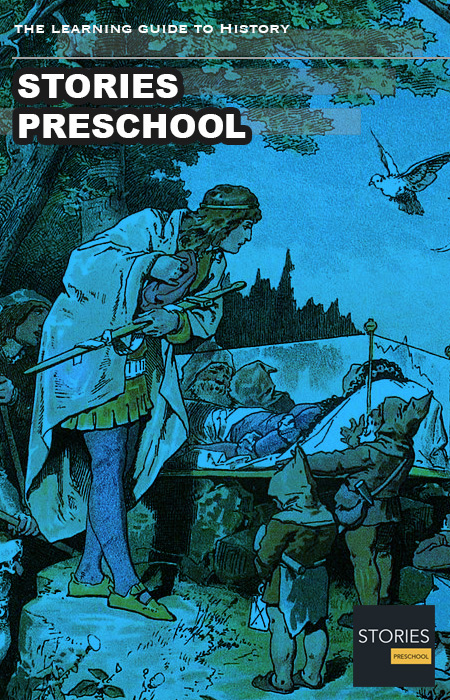Snow White
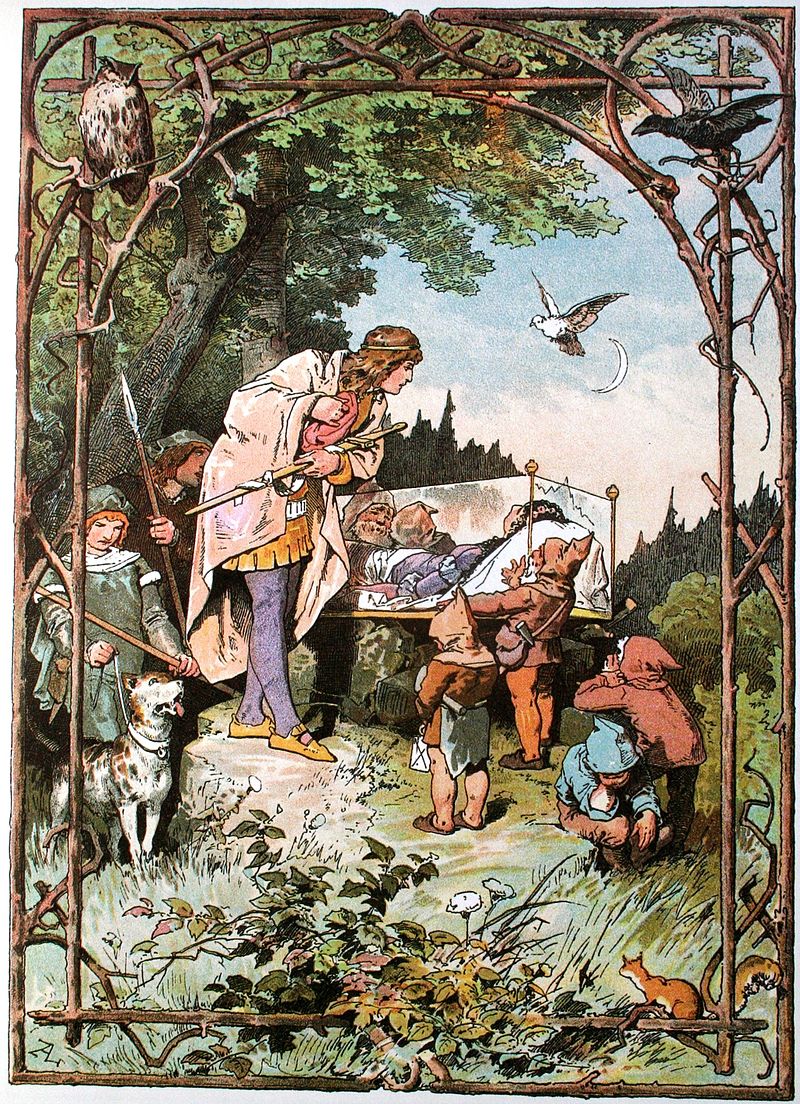
"Snow White" is a nineteenth-century German fairy tale which is today known widely across the Western world. The Brothers Grimm published it in 1812 in the first edition of their collection Grimms' Fairy Tales. It was titled in German: Sneewittchen (in modern orthography Schneewittchen) and numbered as Tale 53. The Grimms completed their final revision of the story in 1854.
The fairy tale features such elements as the magic mirror, the poisoned apple, the glass coffin, matricide, filicide, and the characters of the Evil Queen, Snow White's evil stepmother, the huntsman, a beautiful princess named Snow White into a sleeping enchantment, a handsome prince and the seven dwarfs. The seven dwarfs were first given individual names in the 1912 Broadway play Snow White and the Seven Dwarfs and then given different names in Walt Disney's 1937 film Snow White and the Seven Dwarfs. The Grimm story, which is commonly referred to as "Snow White", should not be confused with the story of "Snow White and Rose Red" (in German "Schneeweißchen und Rosenrot"), another fairy tale collected by the Brothers Grimm.
In the Aarne–Thompson folklore classification, tales of this kind are grouped together as type 709, Snow White. Others of this kind include "Bella Venezia", "Myrsina", "Nourie Hadig", "Gold-Tree and Silver-Tree", The Young Slave and La petite Toute-Belle.
Plot
At the beginning of the story, a beautiful young queen sits sewing at an open window during a winter snowfall when she pricks her finger with her needle, causing three drops of red blood to drip onto the freshly fallen white snow on the black windowsill. Admiring the beauty of the resulting color combination, she says to herself, "How I wish that I had a daughter that had skin as white as snow, lips as red as blood, and hair as black as ebony." Some time later, the Good Queen gives birth to a baby daughter with skin as white as snow, lips as red as blood, and hair as black as ebony. She is named 'Snow White.' Sadly, the Good Queen dies shortly after her daughter is born.
After several years have passed, Snow White's father, the King, takes a second wife, who is very beautiful, but a wicked and vain woman. The new queen, Snow White's evil stepmother, possesses a magic mirror, which she asks every morning, "Mirror mirror on the wall, who is the fairest one of all?" The mirror always replies: "My Queen, you are the fairest one of all." The Queen is always pleased with that, because the magic mirror never lies. But as Snow White grows up, she becomes more beautiful each day and even more beautiful than the Queen, and when the Queen asks her mirror, it says; "My Queen, you are the fairest here so true. But Snow White is a thousand times more beautiful than you."
This gives the queen a great shock. She becomes yellow and green with envy, and from that hour on, her heart turns against Snow White, and the Queen hates the girl more and more. Envy and pride, like ill weeds, grow in her heart taller every day, until she has no peace day or night. Eventually, the Queen orders a huntsman to take Snow White into the deepest woods to be killed. As proof that Snow White is dead, the Queen demands that he returns with her heart. The huntsman takes Snow White into the forest. After raising his knife, he finds himself unable to kill her as she sobs heavily and begs him: "Oh, dear huntsman, don't kill me! Leave me with my life; I will run into the forest and never come back!" The huntsman spares her life. He instead brings the Queen the lungs and liver of a wild boar.
After wandering through the forest, Snow White discovers a tiny cottage belonging to a group of Seven Dwarfs. Since no one is at home, she eats some of the tiny meals, drinks some of their wine and then tests all the beds. Finally the last bed is comfortable enough for her and she falls asleep. When the seven dwarfs return home, they immediately become aware that someone sneaked in secretly, because everything in their home is in disorder. During their loud discussion about who sneaked in, they discover the sleeping Snow White. She wakes up and explains to them what happened, and the dwarfs take pity on her and let her stay with them in exchange for housekeeping. They warn her to be careful when alone at home and to let no one in when they are away delving in the mountains.
Meanwhile, the Queen asks her mirror once again: "Magic mirror in my hand, who is the fairest in the land?" The mirror replies: "My queen, you are the fairest here so true. But Snow White beyond the mountains at the seven dwarfs is a thousand times more beautiful than you". The Queen is horrified to learn that the huntsman has betrayed her and that Snow White is still alive. She keeps thinking about how to get rid of Snow White, then she disguises herself as an old peddler. The Queen then walks to the cottage of the dwarfs and offers her colorful, silky laced bodices and convinces Snow White to take the most beautiful laces as a present. Then the Queen laces her up so tightly that Snow White faints, causing the Queen to leave her for dead. But the dwarfs return just in time, and Snow White revives when the dwarfs loosen the laces.
The Queen then consults her mirror again, and the mirror reveals Snow White's survival. Now infuriated, the Queen dresses as a comb seller and convinces Snow White to take a beautiful comb as a present. She brushes Snow White's hair with the poisoned comb, and the girl faints again, but she is again revived by the dwarfs when they remove the comb from her hair. And the mirror tells the Queen that Snow White is still "a thousand times more beautiful". As a third and final attempt to rid herself of Snow White, the Queen secretly consults the darkest magic and makes a poisoned apple, and in the disguise of a farmer's wife, she offers it to Snow White. The girl is at first hesitant to accept it, so the Queen cuts the apple in half, eating the white (harmless) half and giving the red (poisoned) half to Snow White. The girl eagerly takes a bite and falls into a state of suspended animation. This time the dwarfs are unable to revive Snow White, and assuming that she is dead, they place her in a glass casket.
After a short period of time, a prince traveling through the land sees Snow White. He strides to her coffin and, enchanted by her beauty, instantly falls in love with her. The dwarfs succumb to his entreaties to let him have Snow White, and as his servants carry the coffin away, they stumble on some roots. This causes the piece of poisoned apple to dislodge from Snow White's throat, awakening her. The Prince then declares his love for her, and soon a wedding is planned. Snow White and the Prince invite everyone to come to their wedding party, including Snow White's stepmother. Meanwhile, the Queen, still believing that Snow White is dead, again asks her magical mirror who is the fairest in the land. The mirror says: "You, my queen, are fair so true. But the young Queen is a thousand times fairer than you".
Appalled, in disbelief, and with her heart full of fear and doubts, the Queen is at first hesitant to accept the invitation, but she eventually decides to go. Not knowing that the Prince's bride was indeed her stepdaughter, she arrives at the wedding, and her heart fills with the deepest of dread when she realizes the truth. As a punishment for her evil deed, a pair of red-hot iron shoes are brought forth with tongs and placed before the Queen. She is forced to step into the burning shoes and to dance until she drops dead.

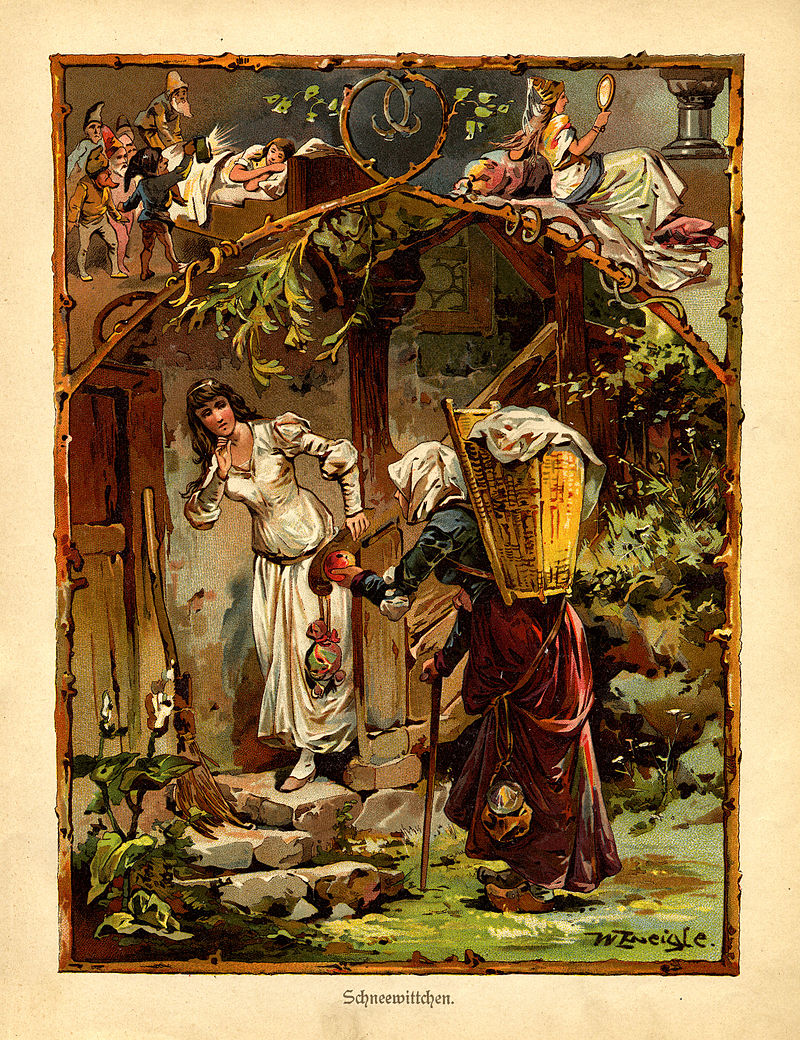
Inspiration
There are some theories about the origin of the fairy tale. In 1994, a German historian named Eckhard Sander published Schneewittchen: Märchen oder Wahrheit? (Snow White: Fairy Tale or Truth?), claiming he had uncovered an account that may have inspired the story that first appeared in Grimm’s Fairy Tales. According to Sander, the character of Snow White was based on the life of Margaretha von Waldeck, a German countess born to Philip IV in 1533. At the age of 16, Margarete was forced by her stepmother, Katharina of Hatzfeld, to move away to Brussels. There, Margarete fell in love with a prince who would later become Philip II of Spain. Margarete’s father and stepmother disapproved of the relationship as it was ‘politically inconvenient’. Margarete mysteriously died at the age of 21, apparently having been poisoned. Historical accounts point to the King of Spain, who opposing the romance, may have dispatched Spanish agents to murder Margarete.
According to a study group in Lohr am Main, a town in the Main-Spessart county of Bavaria, Snow White is based on Maria Sophia von Erthal, born on 15 June 1729 in Lohr am Main, Bavaria. She was the daughter of 18th-century landowner, Prince Philipp Christoph von Erthal and his wife, Baroness von Bettendorff. After the death of the Baroness, Prince Philipp went on to marry Claudia Elisabeth Maria von Venningen, Countess of Reichenstein, who was said to dislike her stepchildren. The castle where they lived, now a museum, was home to a ‘talking mirror’, an acoustical toy that could speak (now housed in the Spessart Museum). The mirror, constructed in 1720 by the Mirror Manufacture of the Electorate of Mainz in Lohr, had been in the house during the time that Maria’s stepmother lived there.
Variations
In their first edition, the Brothers Grimm published the version they had first collected, in which the villain of the piece is Snow White's jealous mother. In a version sent to another folklorist prior to the first edition, additionally, she does not order a servant to take her to the woods, but takes her there herself to gather flowers and abandons her; in the first edition, this task was transferred to a servant. It is believed that the change to a stepmother in later editions was to tone down the story for children.
One version of Snow White is the 1937 American animated film Snow White and the Seven Dwarfs by Walt Disney. Disney's variation of Snow White gave the dwarfs names and included a singing Snow White. Instead of her lungs and liver, as written in the original, the huntsman is asked by the queen to bring back Snow White’s heart. Snow White is much more mature (about 14). And she is discovered by the dwarfs after cleaning the house, not vandalizing it. Furthermore, in the Disney movie the evil queen tries only once to kill Snow White (by a poisoned apple) and fails. She then dies by falling down a cliff, after the dwarfs had chased her through the forest. In the original, the queen is forced to dance to death.
In Snow White (1987), produced by Cannon Movie Tales, the Evil Queen, after being informed for the last time that Snow White is alive and the most fair, is consumed with rage and hurls an object at the mirror causing it to crack. As she travels to the wedding, the Evil Queen begins to age rapidly as the mirror continues to crack. By the time she reaches the wedding and bursts in, she is an old hag and is humiliated by the crowd. She leaves and, simultaneously with the mirror in her castle, disintegrates into a pile of dust while Snow White and the Prince are married.
In the 2012 adaptation Snow White and the Huntsman, directed by Rupert Sanders, Snow White becomes a warrior in order to overthrow the Evil Queen named Ravenna, and the huntsman named Eric is presented as her mentor and possible love interest.
Many later versions omit the Queen's attempted cannibalism, eating what she believed to be the lungs and liver of Snow White. This may be a reference to old Slavic mythology which includes tales of witches eating human hearts.
LITERATURE FAIRY TALES

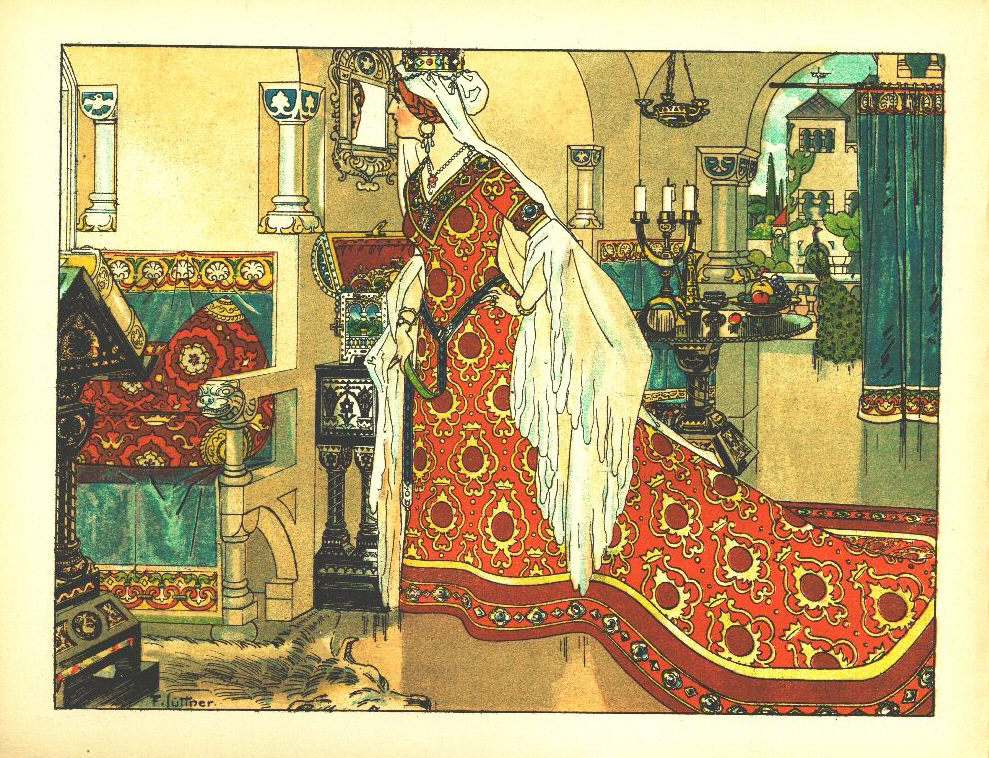
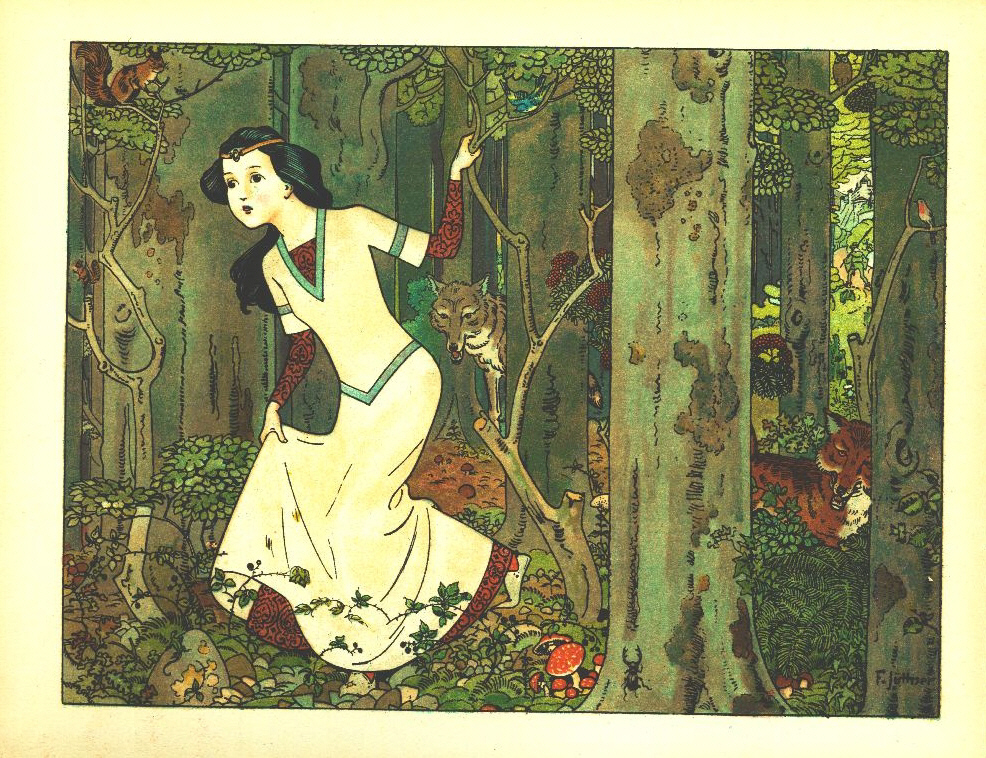

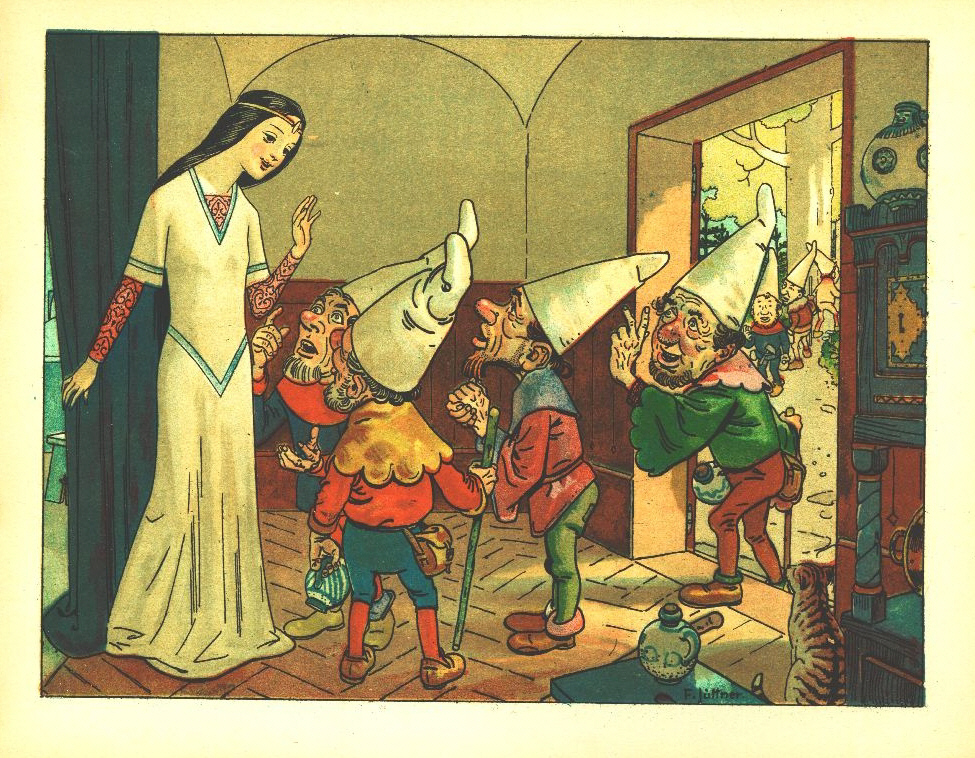
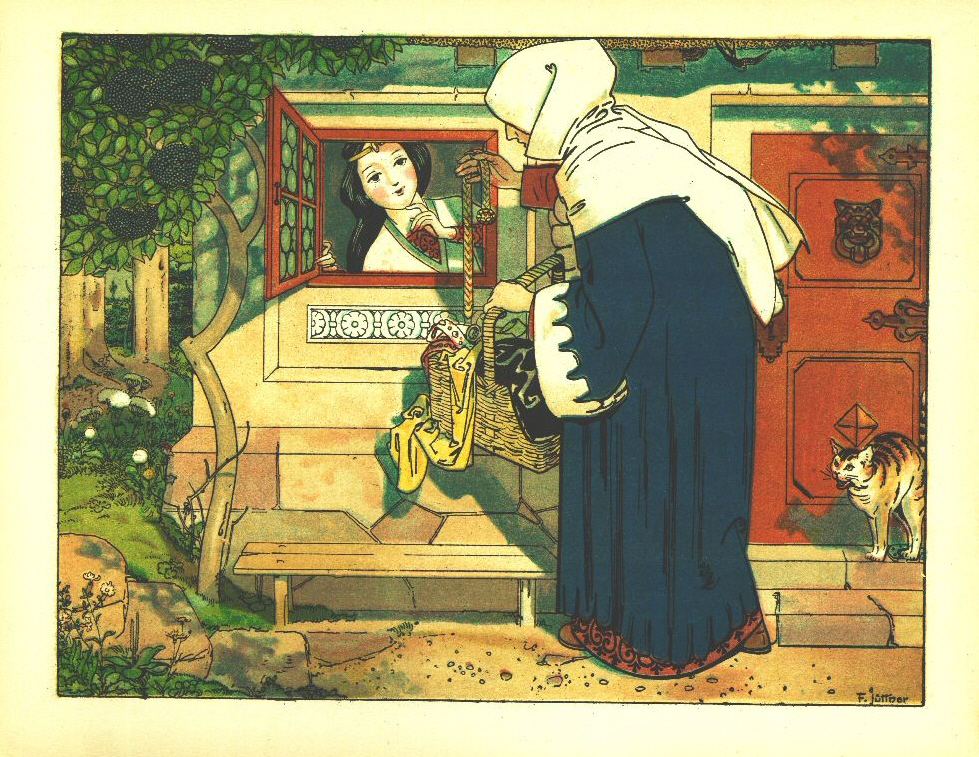
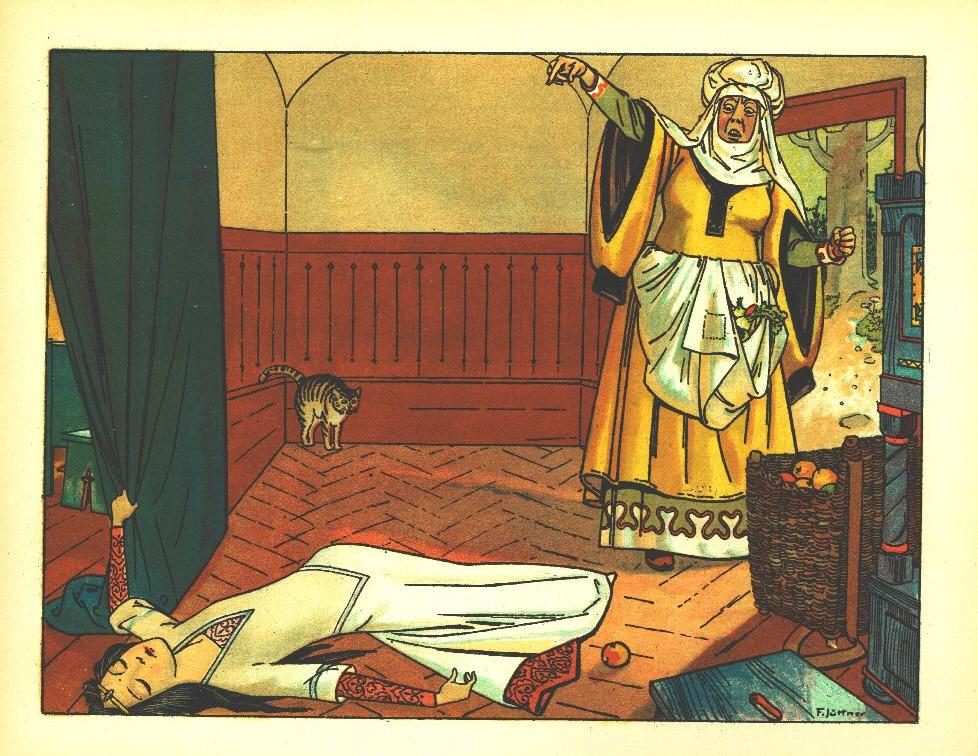
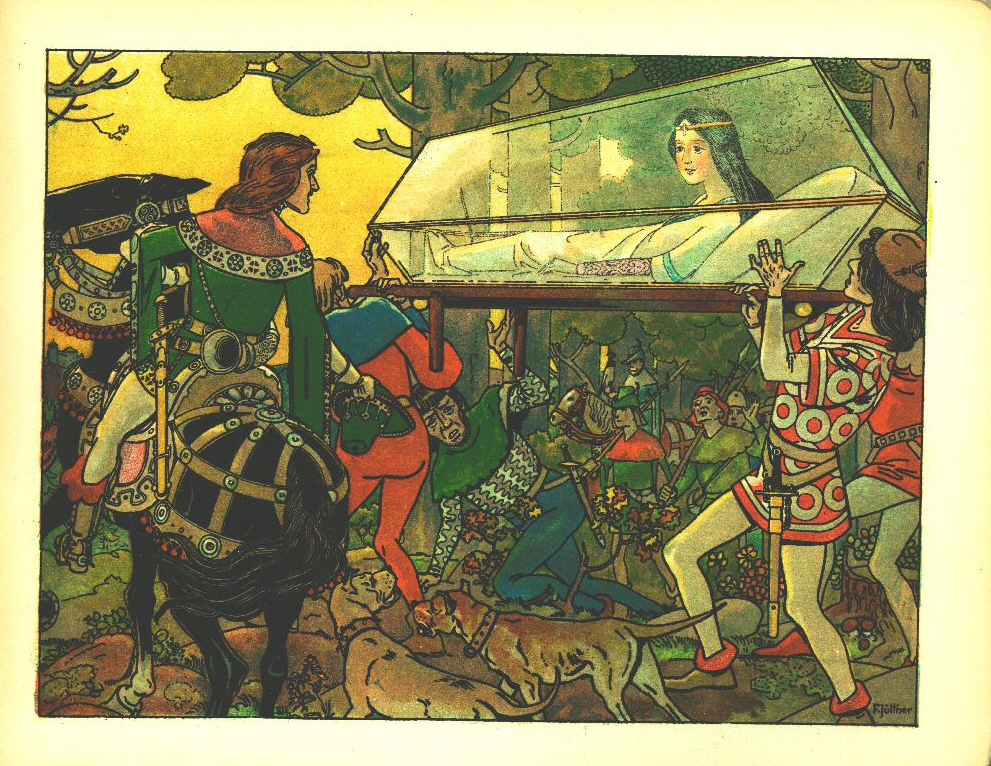
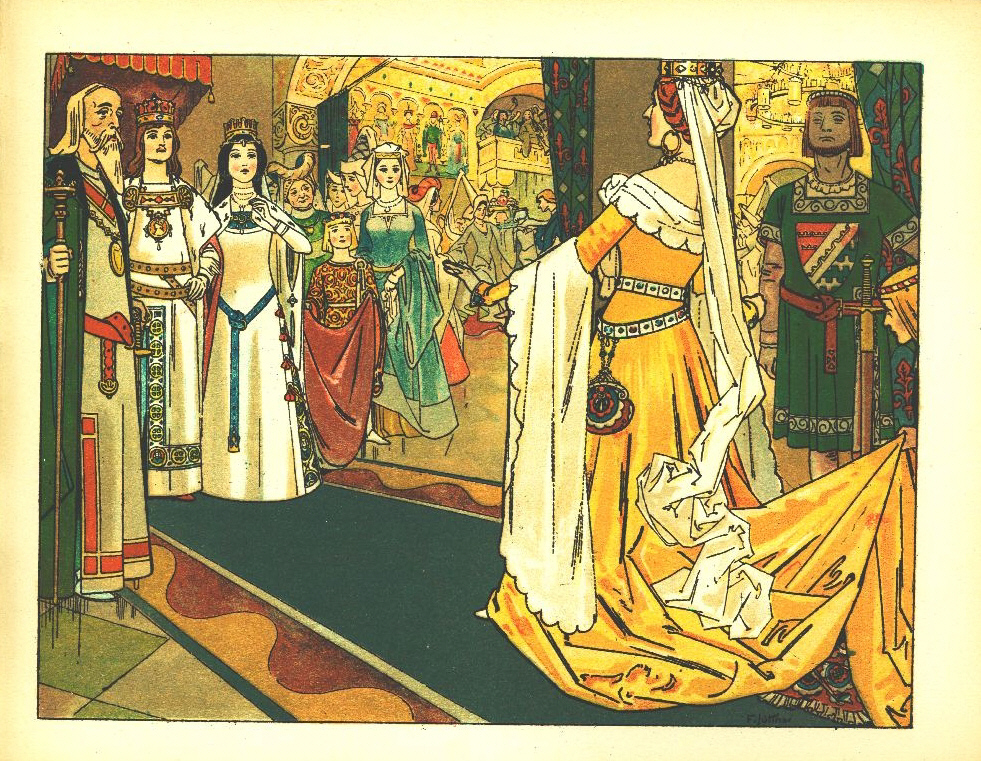
A fairy tale is a type of short story that typically features folkloric fantasy characters, such as dwarves, elves, fairies, giants, gnomes, goblins, mermaids, trolls, or witches, and usually magic or enchantments. Fairy tales may be distinguished from other folk narratives such as legends (which generally involve belief in the veracity of the events described) and explicitly moral tales, including beast fables. The term is mainly used for stories with origins in European tradition and, at least in recent centuries, mostly relates to children's literature.
Read More » List of Fairy tales »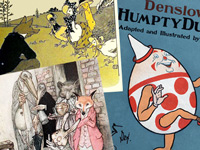
RESOURCES
This article uses material from the Wikipedia articles "List of fairy tales", "Fairy tale" and "Snow White", which is released under the Creative Commons Attribution-Share-Alike License 3.0.
© Stories Preschool. All Rights Reserved.
